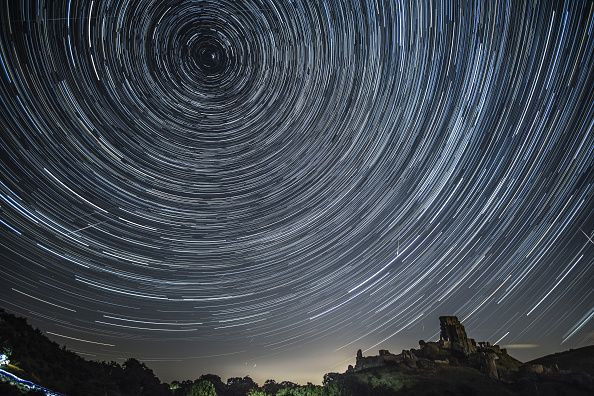October Sky Event: Draconid Meteor Shower To Grace The Skies This Week
KEY POINTS
- Draconid meteor shower is set to peak this week
- Unlike other meteor showers, it is best to view the Draconids earlier in the evening
- Sky-watchers don't need special equipment but must have patience in waiting
The Draconid meteor shower is set to peak this week. This time, sky-watchers won't need to stay up late to catch the celestial event.
After the first of two full moons of the month, the next October sky event is the peak activity of the Draconids meteor shower from Oct. 6 to 10, with the best viewing opportunity being on Wednesday.
Named as such because they appear to travel from a point close to the "head" of the visible constellation Draco, the Draconid meteors come from the debris of comet 21P/Giacobini-Zinner, which is why it used to be called the Giacobinids.
Typically, the Draconids produce only about five meteors per hour but, this meteor shower has the tendency to surprise sky-watchers occasionally. For instance, in 1933 and 1946, the Draconids displayed thousands of meteors per hour. In 2011, observers in Europe were also treated to 600 meteors per hour while the 2018 Draconid meteor shower was also quite favorable because its parent comet reached its closest point to Earth in over 70 years.

This year, a Draconid outburst is not expected but the American Meteor Society (AMS) notes that this year's event may display "a bit more activity."
Sky-watchers don't need to stay up late because the Draconid meteor shower is best viewed as soon as night falls or in the early evening, quite unlike most other meteor showers that are best viewed later in the evening. The meteors from this shower are also said to be slower than in other meteor showers, typically lasting a full second or two, the AMS notes.
What the Draconids have in common with other meteor showers, however, is that they are best observed in places where there is less light pollution, such as in rural areas. Fortunately, the moon will not rise until late in the evening, giving sky-watchers ample time to catch a glimpse of the meteor shower with the dark skies.
Although the Northern Hemisphere is said to be a better spot for the Draconids, even sky-watchers in the Southern Hemisphere can catch a glimpse of the meteor shower. But no matter where a sky-watcher is in the world, what's important is to try and catch a glimpse of the event as soon as it becomes dark.
Those who would like to catch a glimpse of the Draconids don't need any special equipment but are advised to bring a lounge chair since watching meteor showers tend to take a while, and to preferably bring a blanket since October evenings tend to be chilly. As always, it's important to have patience and give the eyes ample time to adjust to the darkness before one can start seeing the meteors.
"(M)eteor showers are notorious for defying the most carefully crafted forecasts," EarthSky writes. "So you never know for sure what's up in a meteor shower unless you look."
© Copyright IBTimes 2025. All rights reserved.






















